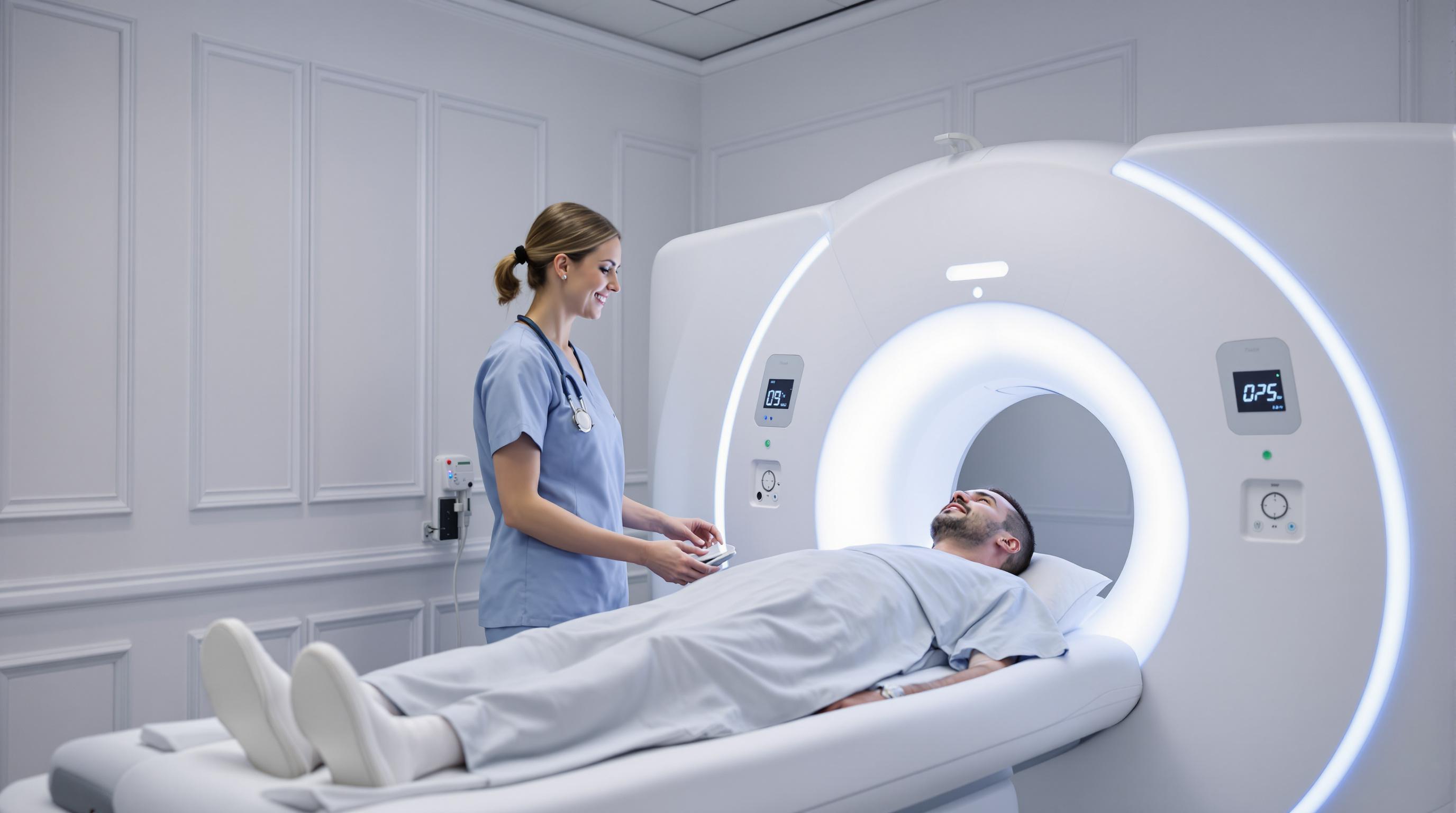The Emergence of Longevity Clinics
The landscape of healthcare is experiencing a profound transformation with the emergence of longevity clinics, marking a significant shift from reactive medicine to a proactive approach focused on prevention and optimization of health. The very first longevity clinic, Human Longevity, was established in San Diego a decade ago by biochemist J. Craig Venter, one of the pioneering scientists who mapped the human genome.
Unlike traditional medical facilities that primarily focus on treating diseases after they manifest, longevity clinics operate on a fundamentally different principle. Their core mission is to fight diseases before they take hold through comprehensive preventive care and early detection. As Venter explains, "You can tell me whether you feel healthy; I can tell you whether you're actually healthy."
The evolution of these specialized centers has been remarkable over the past few years, with facilities sprouting up from Singapore to Southern California. Notable examples include:
- Peter Attia's practice in Texas (estimated costs between $90,000-$150,000 annually)
- Tony Robbins' and Peter Diamandis' Fountain Life ($3,000-$19,500)
- Biograph in San Mateo, California ($7,000-$14,500)
- Chi Longevity in Singapore ($11,100 for a 10-month program)
What truly sets these clinics apart is their comprehensive approach to health assessment. A typical longevity physical takes approximately eight hours and involves extensive testing, including genetics, gut health evaluation, physical strength assessments, cognition tests, body scans, and detailed blood work. This thorough examination provides a complete picture of an individual's health status and potential future risks.
The industry has seen significant growth, with longevity venture capital investment more than doubling between 2021 and 2022, from $27 million to $57 million globally. Analysts estimate there are now as many as 800 clinics in the US alone, reflecting the increasing demand for proactive, personalized healthcare approaches.
An encouraging development in this field is the emergence of more accessible options. Public longevity clinics have opened in Singapore and Tel Aviv, though they currently face overwhelming demand with long waitlists. This evolution suggests a gradual democratization of longevity medicine, moving beyond its initial positioning as an exclusive service for the wealthy.

Advanced Technologies and Diagnostics
At the forefront of longevity medicine, clinics are deploying an impressive array of cutting-edge diagnostic technologies to gain unprecedented insights into human health and aging. These sophisticated tools allow for comprehensive health assessments that go far beyond traditional medical examinations.
One of the cornerstone technologies is whole-body MRI scanning, which provides detailed imaging of organs, tissues, and skeletal structures. At Fountain Life, these scans can detect small lesions that might become malignant, achieving a remarkable 95% early detection rate for asymptomatic cancers. This early identification significantly improves treatment outcomes compared to later-stage diagnoses.
Genetic analysis forms another crucial component of the diagnostic arsenal. Advanced DNA testing examines genetic predispositions and lifestyle factors, enabling clinics to identify potential health risks decades before they manifest. This information helps create highly personalized intervention strategies tailored to each individual's genetic profile.
Biological age testing has become increasingly sophisticated, with clinics utilizing multiple aging clocks to assess different aspects of cellular aging. Chi Longevity, for instance, employs up to 60 different clocks to evaluate various populations and study parameters. These tests examine methylation patterns on DNA to detect cellular wear and tear, providing insights into a person's biological rather than chronological age.
The analysis of aging biomarkers includes comprehensive bloodwork that examines:
- Inflammatory markers
- Metabolic profiles
- Hormone levels
- Micronutrient status
- Telomere length
Advanced clinics also conduct detailed microbiome analysis, recognizing the crucial role gut health plays in overall longevity. This testing examines the current status of intestinal flora and enables targeted interventions to optimize microbiome function, which impacts everything from immune response to cognitive health.
Continuous monitoring through wearable devices complements these diagnostic tools, tracking real-time data on sleep patterns, heart rate variability, blood glucose levels, and other vital metrics. This ongoing data collection allows clinics to fine-tune interventions and track progress with unprecedented precision.

A Personalized Treatment Approach
Based on the comprehensive diagnostics, longevity clinics develop highly individualized treatment plans that combine multiple therapeutic approaches. These plans evolve continuously as new data is collected through ongoing monitoring.
Hormone optimization represents a cornerstone of treatment, with clinics offering bioidentical hormone replacement therapy (BHRT) carefully calibrated to each patient's needs. This may include testosterone, estrogen, thyroid hormones, and growth hormone optimization to restore youthful hormone profiles.
Regenerative medicine treatments are tailored to address specific aging concerns:
- Therapeutic plasma exchange to remove harmful compounds from blood
- Stem cell therapies to promote tissue repair
- Platelet-rich plasma treatments for musculoskeletal healing
- Peptide therapies to enhance cellular regeneration
Nutritional optimization goes far beyond basic dietary advice. Clinics create personalized nutrition protocols based on genetic data, gut microbiome analysis, and metabolic testing. These are complemented by targeted supplementation to address specific deficiencies and longevity pathways.
Exercise prescriptions are equally customized, with programs designed around detailed assessments of cardiovascular health, muscle strength, and functional movement patterns. Clinics utilize advanced metrics like VO2 max testing to fine-tune training intensity and modalities.
Through continuous monitoring via wearable devices and regular follow-up testing, treatment plans are dynamically adjusted. This data-driven approach ensures interventions remain optimally effective as the patient's health status evolves.
The Multidisciplinary Team
At the heart of longevity clinics lies a diverse team of healthcare professionals working in concert to optimize patients' health and extend their healthspan. This collaborative approach ensures comprehensive care that addresses all aspects of aging and wellness.
The foundation of these teams are longevity medicine physicians who specialize in understanding the biological processes of aging. These doctors have expertise in various fields and maintain a thorough understanding of aging mechanisms like proteostasis, epigenetics, and cellular senescence. They coordinate overall patient care and supervise treatment protocols.
Specialized nurses play a vital role in patient care, conducting initial assessments, measuring aging biomarkers, and ensuring accurate medical information collection. They are instrumental in patient education and ongoing monitoring of treatment progress.
Allied health professionals form an essential part of the team:
- Dietitians develop personalized nutrition plans promoting optimal longevity
- Exercise physiologists and physical therapists create tailored fitness programs to enhance mobility and strength
- Mental health professionals address psychological aspects of aging
- Health coaches focus on lifestyle modifications and behavioral changes
- Pharmacists review medications and supplements to prevent interactions
Many clinics also incorporate regenerative medicine specialists who oversee advanced treatments like stem cell therapy and therapeutic plasma exchange. These experts work closely with other team members to integrate these cutting-edge interventions into comprehensive treatment plans.
Continuous education is paramount in the rapidly evolving field of longevity medicine. Team members regularly participate in specialized training programs, with many clinics partnering with academic institutions to stay current with the latest research and treatment protocols. The Healthy Longevity Medicine Society has developed accredited courses for medical professionals, with over 6,000 practitioners already trained in longevity medicine principles.
The success of longevity clinics heavily relies on effective collaboration between these specialists. Regular team meetings ensure coordinated care delivery and allow for adjustment of treatment plans based on patient progress and emerging research. This integrated approach enables the delivery of truly personalized care aimed at optimizing healthspan and lifespan.
Costs and Accessibility
The financial investment required for longevity clinic services varies significantly. Initial comprehensive assessments typically range from $5,000 to $10,000, while annual membership programs can exceed $100,000. At Human Longevity's clinic, clients pay approximately $25,000 for a complete workup, while Peter Attia's exclusive practice reportedly charges between $90,000 and $150,000 per year.
More accessible options are emerging through Fountain Life clinics, with programs ranging from $3,000 to $19,500. In Singapore, Chi Longevity offers a 10-month program for $11,100, demonstrating a trend toward more moderate pricing structures in some markets.
A significant development in accessibility is the emergence of publicly funded longevity clinics. Notable examples include:
- Singapore's public longevity clinic, launched in August 2023
- Israel's Sheba Longevity Center, connected to Tel Aviv's largest hospital
- Mayo Clinic's healthy longevity clinic in Rochester, Minnesota
These public institutions are pioneering a more accessible model, with costs significantly lower than private clinics. They also contribute to clinical research and the development of standardized protocols, potentially paving the way for broader adoption of longevity medicine.
The cost-benefit analysis for patients extends beyond monetary considerations. Early detection of health issues through comprehensive screenings can prevent costly medical interventions later in life. For instance, Human Longevity reports that among 1,000 "asymptomatic" patients, 40% discovered conditions requiring long-term medical attention, while 14% identified pressing health issues requiring immediate intervention.
Looking ahead, industry leaders acknowledge the current limitations of accessibility. Dr. Eric Verdin describes the present state as "medicine for the rich, by the rich," but emphasizes the goal of democratizing these services. As technologies advance and protocols become standardized, costs are expected to decrease, potentially making longevity medicine accessible to a broader population through traditional healthcare systems.
The Future of Longevity Medicine
The field of longevity medicine stands at the cusp of a major transformation, with artificial intelligence and machine learning poised to revolutionize personalized healthcare. AI algorithms will increasingly analyze vast datasets of genetic information, lifestyle factors, and medical records to identify early disease risks and optimize treatment plans.
The Healthy Longevity Medicine Society (HLMS), established in 2022, is leading efforts to standardize protocols and build credibility in the field. With over 200 members, including medical doctors and healthcare professionals, HLMS has developed accredited courses now implemented in four medical schools, marking significant progress toward legitimizing longevity medicine.
Emerging therapeutic frontiers include:
- Senolytic therapies targeting aging cells
- Advanced peptide treatments for cellular regeneration
- Gene therapies for preventing age-related diseases
However, regulatory challenges remain significant. The lack of universal standards and oversight has led to concerns about unproven treatments and clinics making unsubstantiated claims. The industry must work closely with regulators and ethical committees to establish clear guidelines while maintaining innovation.
Looking ahead, experts envision longevity medicine transitioning from specialized clinics to general practice settings, similar to how asthma care evolved. Dr. Andrea Maier suggests that within a decade, standardized protocols could enable primary care physicians to deliver many longevity interventions, making this revolutionary approach to healthcare more widely accessible.
